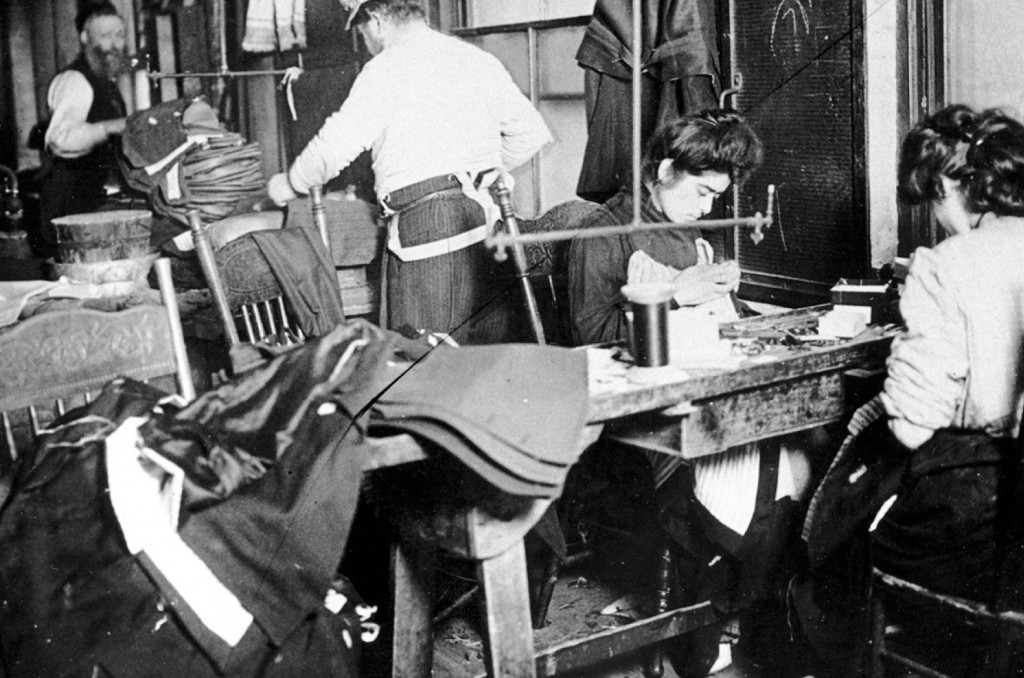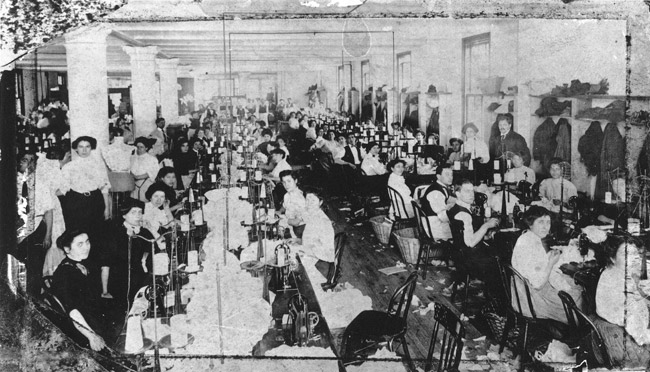HISTORICAL CONTEXT
Home
Thesis
Historial Context
Fire
Labor Unions
Child Labor
Safety Reforms
Conclusion
Annotated Bibliography
Process Paper

Workers in Crowded Conditions.
Photograph courtesy of FashionSchoolDaily.com

Overcrowded sewing room.
Photograph courtesy of Cornell University.
There were three significant areas that needed to change in the workplace prior to the turn of the 20th century: child labor, workplace safety, and the recognition of labor unions. First, children were preferred workers in factories because they were small and could easily work with intricate parts and employers only had to pay children half wages. Additionally, children were less likely to be caught up in the reform movement which was changing how Americans looked at working conditions and children in the workplace.
Second, employers hired new immigrant women and children who were desperate for work in order to help support their families. Supervisors required many of them to supply their own needles, thread, irons, and sometimes sewing machines. Immigrants were also less likely to be involved in the reformation. Most factory workers had a six-day work week with time off for Sunday worship. Because the immigrants needed their jobs, they were required to work twelve-hour days sometimes without any time off on Sunday.
Third, the safety conditions in the industrial workspace were overlooked by owners in an effort to keep costs down. The buildings were crowded with little room to move. Fire escapes, hoses, and elevators were broken and not repaired due to cost. After working a shift, limited exits were provided so girls’ bags could be checked before they left the factory—this was in an effort to prevent workers from stealing scraps of material.
The Asch building in New York City was owned by Max Blanck and Isaac Harris. The Triangle Shirtwaist Factory was located on the top three floors and was a perfect example of neglect in all three areas.